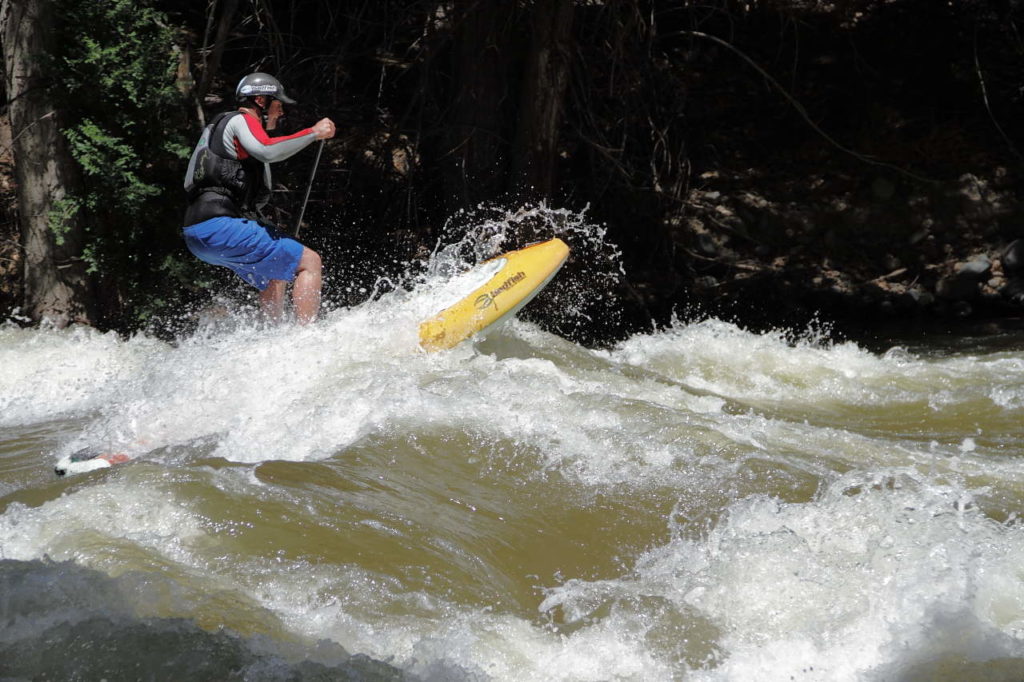In the last couple of years, stand-up paddle boarding has rightfully become the most popular and fastest growing water sport in the world. You have an endless list of places to go paddle boarding. There are rivers, lakes, oceans, canals, and ponds where you can race, surf, and downwind.
However, there are several safety tips you should pay attention to. We all know the feeling of excitement when you wake up to a blue sky and know you’ve got a full day on the water ahead of you. Brushing up on these safety tips before you head to the water will make sure that your SUPing accidents are avoided and you always have a great time.

River Paddle Boarding
We all know that a river is full of life. Plan your activity well before you go stand-up paddle boarding in the river. First, be honest and gauge your skill level. Find an outfitter or a professional guide to give you an overview of paddle boarding and the flow of the river.
Remember to start slow and before you move up, try to get used to the current with your board. You’ll never know when the current can bump off to a riverbed. Always wear a life jacket and a helmet. Also, make sure your leash is a quick-release. A leash can hang up on branches, and it would be helpful if you can release it easily. Other protective gear like shin and kneepads are also helpful in shallow parts of the river. Keep yourself warm and protected from hypothermia with a dry or wet suit too.
Surf
Just like paddle boarding in the river, you should also first know your ability level before you rush to the water. As a beginner, you should be aware that you’re not allowed to paddle into a crowded area where there are surfers or boogie boarders. Always see to it that you only go to areas designated for standup paddling.
Before you head to the water, protect yourself with sunscreen that has an SPF of 30 to 50. We all know prolonged exposure in the sun can be harmful. Wear a rash guard or a good quality wetsuit to protect your skin and also to safeguard your core body temperature.
4 W’s by NRS
Plan your activity. Thirty minutes of planning goes a long way. Allot time to think of what to bring with you. Make sure you have all the protective gear. Check the weather forecast on the date that you want to go. Most importantly, contact the Coast Guard, a local marine police, or an outfitter to know more about the tides and the currents so that you are aware of the hazards before you head out to the water if you’re paddling in an area you don’t know well.
File a float plan. Simply put, tell others that you’re out to paddle. Oftentimes, you’ll find yourself carried away by the beauty of the sea and the joy that paddle boarding gives you. Open waters can stretch up to a hundred miles. There are instances where paddlers find it hard to get back to shore. It is best to let someone know the time you intend to come back so you will have someone to look out for you.
Paddle with a buddy. It’s not enough to tell others where you’re going. It may feel good to paddle alone sometimes, but safety should always come first. If you have no friends or family who can paddle with you, there are lots of local SUP groups you can join.
Always make sure that you are attached to your board with its leash. If anything goes wrong, remember that your board is a good floatation device. If you fall, just find your way to the board and cling to it. Be humble and know your limits when you go paddling.
Have fun but stay safe!
SupBoardGuide Editorial Team
Latest posts by SupBoardGuide Editorial Team (see all)
- Best Inflatable Paddle Boards (iSUPs), 2025 - July 3, 2025
- Best Cheap Inflatable Paddle Boards (2025) - March 26, 2025
- SeaGods Carta Marina CX Review - January 31, 2025






